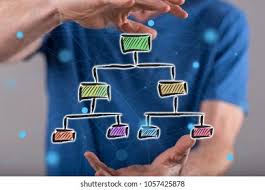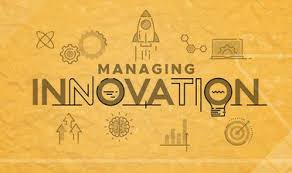Organizational Design as it Relates to Organizational Theory
Annotated Bibliography
Abstract
Organizational design is an important aspect in organizational theory, given the role played by organizational design in providing direction for the firm. Organizational design refers to systematic methodologies that organizations utilize in identifying organizational aspects that are dysfunctional, before realigning them to ensure that they are in tandem business goals and developing plans to make the necessary changes.
Organizational theory, on the other hand, involves the study of organizations with an objective of identifying structures and strategies for efficiency and productivity maximization. Organizational design is related to organizational theory because organizational theory seeks to study strategies undertaken by firms to enhance productivity, which essentially represents what organizational design aims to achieve.
In studying research design as it relates to research theory, a number of themes are explored in this paper. These include the impact of organizational design in promoting firm productivity and efficiency, the impact of organizational design on change management, the role of organizational design in enhancing employee performance and motivation, how organizations can ensure that they have the right fit when it comes to organizational strategy, and how the effectiveness of organizational design can be enhanced.
Outline
- Organizational design
- Organizational theory
- Organizational design as it relates to organizational theory
- Impact of organizational design in enhancing productivity and firm efficiency
- Organizational design and its role in change management
- Organizational design and its role in employee motivation and engagement
- Organizational design and the concept of FIT
- Promoting the effectiveness of organizational design
Annotated Bibliography
- Tarek, S., Wilberg, J., Tommelein, I. D., & Lindemann, U. (2016). Supporting the design of competitive organizations. Journal of Modern Project Management, 4(2), 96-103. doi:10.19255/JMPM01109
This paper addresses organizational competitiveness by illustrating the importance of adapting effectively to market changes. According to Tarek et al. (2016), external environment trends are a constant disruption to companies and the need to adopt strategies that enhance competitiveness is of great significance. In this paper, they make use of the Viable Systems Model (VSM), which is used in promoting organizational design and avoiding deficiencies. Technology adoption and external environment monitoring come out as important themes in strategic design in a bid to improve competitiveness. This paper effectively demonstrates the importance of organizational design in enhancing competitiveness and is therefore applicable to my topic.
- Capelle, R. G. (2017). Improving Organization Performance by Optimizing Organization Design. People & Strategy, 40(2), 26-31.
This article dwells on explaining the relevance of organizational design on organizational performance. In this article, Capelle (2017) notes that a clear understanding of current strategy is important in organization design optimization, such that the organization can be transformed into a high-performing unit. The role of organizational design in relation to the human resource is discussed, with the conclusion that the design of the organization determines its overall performance.
This includes the development of optimal organizational structures and clear lines of accountability and deliverables. People alignment is also considered an imperative factor in optimizing organizational design as it ensures efficient performance. This paper addresses a critical aspect of organizational theory which is the impact of human resource management and will be useful in addressing the employee engagement section in my paper.
- Donaldson, L., & Joffe, G. (2014). FIT – the key to organizational design. Journal of Organization Design, 3(3), 38-45. doi:10.7146/jod.18424
The ability to develop an organizational design that meets a company’s objectives and aligns with its strategy is considered an important factor in determining its efficiency. In this paper, Donaldson & Joffe (2014) discuss the concept ‘fit’, noting that an organizational design needs to fit the situation in order to successfully influence the performance of the organization.
Situational factors may include organizational size, competitive strategy, and task uncertainty. Donaldson & Joffe (2014) also use the contingency theory to explain how fits may be developed and misfits identified. The paper aligns well with my paper because it provides valuable details on how to promote the effectiveness of strategic design through ensuring that it fits the organization’s situation.
- Stea, D., Foss, K., & Foss, N. J. (2015). A Neglected Role for Organizational Design. Journal of Organization Design, 4(3), 3-17. doi:10.7146/jod.20434
In this paper, the authors focus on the relevance of delegation in enhancing an effective organizational design. According to Stea, Foss & Foss (2015), organizations must respond to environmental changes that currently call on organizations to foster knowledge and motivation among employees. This is effectively achieved through delegation and can be realized through the development of the organizational design to create value for organizations.
The paper also discusses the question of credibility in delegation and motivation, which may affect the outcome of the exercise. This paper is a great addition to my literature review as it addresses issues affecting organizational design.
- Nissen, M. (2014). Organization Design for Dynamic Fit. Journal of Organization Design, 3(2), 30-42. doi:10.7146/jod.8196
Nissen (2014) discusses the concept of ‘fit’, which is considered an important aspect of organizational design. Given the constant change in the business world, organizations must adjust in order to be competitive and strategic design must seek to address these dynamics in ensuring that it works effectively for the organization.
Nissen studies various theoretical perspectives affecting fit including design orientation, manager roles, organizational systems and measurement and validation. This paper provides valuable insight into my topic and will be beneficial in explaining how organizational design success can be enhanced.
- Felin, T., & Powell, T. C. (2016). Designing Organizations for Dynamic Capabilities. California Management Review, 58(4), 78-96. doi:10.1525/cmr.2016.58.4.78
Enhancing competitiveness is subject to an organization’s ability to adapt to different environmental changes. Felin & Powell (2016) examine the development of dynamic capabilities through organizational design and note that this could be impactful in enhancing innovation. The article makes reference to Valve Corporation as an example, an organization that has been highly successful in market adaptation and strategic innovation in a fast-moving environment.
The research by Felin & Powell notes that dynamic capabilities ensure that organizations can survive in competitive landscapes and constant market changes including technology change and market demand volatility. This research will contribute to my paper through providing insights on how organizations can harness their strategic positions through organizational design.
- Connor, A. (2015). Organizational Design that Really Works. Design Management Review, 26(3), 23-29. doi:10.1111/drev.10329
This paper addresses organizational change and its related impact on organizational design. According to Connor (2015), change and reorganization require the application of innovative strategies to ensure that the change is beneficial to the organization. In this regard, organizational design is considered imperative in ensuring that change is set up in a way that it aligns with and supports the organizational objectives. Connor notes that integrating design into an existing system requires adjustments to ensure a strategic fit and also the need to observe, analyze and modify to allow effective implementation.
- Mendoza-Walters, A., & Ivanov, S. (2016). Combining passion with planning: applying organizational theory to improve business operations in non-profit organizations. International Journal of Organizational Innovation, 9(2), 46-51.
This research is unique in that while a majority of articles focus on for-profit organizations, it addresses the challenges faced by non-profit organizations. Through focusing on a Washington DC non-profit, the paper demonstrates how organization theory could improve its performance, by ensuring effective planning. Mendoza-Walters & Ivanov (2016) make various recommendations for more effective performance including the implementation of more strategic division of labor, restructuring the organization, and the inclusion of technology in enhancing planning. The paper demonstrates that business efficiency can be improved through organizational theory and therefore forms a basis for understanding my topic of study.
- Aubry, M., & Brunet, M. (2016). Organizational Design in Public Administration: Categorization of Project Management Offices. Project Management Journal, 47(5), 107-129.
Aubry & Brunet (2016) focus on public administration organizational design with the aim of determining how government offices can utilize organizational design to improve their performance. The public administration offices are required to implement multiple projects with each requiring careful consideration to ensure that it meets the needs of the public. Effective project management requires organizational design to ensure that the projects are successfully implemented.
In this relation, Aubry & Brunet (2016) suggest categorization of projects based on types and this is considered effective in enhancing project outcomes. The research concludes that organizational design is important in enhancing project outcomes and therefore effective in promoting public organizations’ performance. This paper contributes to my research by providing important aspects of organizational design and how they influence performance.
- Daft, R. L. (2015). Organization Theory and Design. Cengage Learning.
This book offers valuable information on organizational theory and design by discussing the two concepts in detail, culminating in a comprehensive understanding of how organizational design is related to organizational theory. The author addresses various factors influencing organizational design’s effectiveness.
This includes a discussion of the internal and external factors that influence organizational design as well as internal design elements that are useful in enhancing the organizational performance. These include technology organization size and life cycle. It also covers innovative ways of managing dynamic processes such as innovation, change, ethical values, conflict and power among others. This is a rich information source that will be of great significance in my research.
- Burton, R. M., Obel, B. & Håkonsson, D. D. (2015). Organizational Design: A Step-by-Step Approach. Cambridge: Cambridge University Press.
This book discusses the multi-contingency organizational design besides other aspects of organizational design and theory. In doing so, the authors identify two complementary problems involved in organizational design namely the partitioning of tasks and coordination of sub-unit tasks to enhance effective fit with the organizational goals.
In explaining the concept of organizational design, they approach it from a multi-contingency aspect and discuss five components namely the scope/goal, structure, strategy, processes, and people. This information provides a great understanding of organizational design and it can be established that by aligning these organizational design components, efficiency may be achieved. This book is highly valuable and will provide high-level information for reference in my research.
- Hunter, S. D. (2015). Combining Theoretical Perspectives on the Organizational Structure-Performance Relationship. Journal of Organization Design, 4, 2, 24-37.
In this paper, Hunter (2015) focuses on the organizational structure by noting that it plays an important role in promoting organizational performance. The paper discusses theoretical aspects on the link between organizational structure and performance. Organization design elements are influenced by various factors including environmental conditions, task characteristics, strategic orientation, and relationships. This insinuates that organizational design determines how effective an organization is in creating an organizational performance. This research will add to my literature review by demonstrating the interrelationship between organizational design and performance.
- McDonnell, J. M. (2015). The Role of Organizational Design in 21st Century Organizations: George Jetson and the Star Model. Journal of Transformative Innovation, 1 (1), 1-6.
As technological advancements continue to be witnessed in today’s world, business is likely to change significantly and it is this kind of changes that this article addresses through a discussion on the role played by organizational design in modern organizations. McDonnel points out that organizations must have a futuristic approach and this entails an inclusion of organizational designs that reflect strategic thinking. Organizational design is considered a way of achieving this by combining different strategies to meet today’s business environment challenges including management of people, processes, structure, and rewards. The research will add value to my research by providing valuable information on organizational design and how it impacts performance.
- Junqueira, E. et al. (2016). The Effect of Strategic Choices and Management Control Systems on Organizational Performance. DOI: 10.1590/1808-057×201601890
In this research, Junqueira, et al. (2016) investigate generic strategic choices and how they affect the performance of organizations. In doing so, the concepts of organizational design and organizational theory emerge and it can be established that the strategic choice taken determine the outcome in reference to organizational performance. According to the research, the strategy adopted by the organization is influenced by the competitive forces and that the organizational design is highly instrumental in influencing performance. This source provides information about strategic design and will be useful in developing an understanding of how it influences performance in the development of my paper.
- Chouikha, M. B. (2016). Organizational Design for Knowledge Management. New York: Wiley & Sons
Knowledge management is imperative in organizational design as it ensures that set strategies can be effectively implemented. This is articulately discussed by Choiuikha (2016) in his book on organizational design for knowledge management. The book addresses the relevance of knowledge by illustrating how organizations can anchor knowledge through individual skills, data and information, and how this can be elevated from individual to organizational learning. In this relation, knowledge transfer, knowledge acquisition and knowledge storage are considered key in enhancing organizational strategy and consequently the organizational performance. The impact of culture on knowledge management is also discussed. This book contains valuable information that will be instrumental in ensuring that my research is based on good foundations on organizational design and theory.
References
Aubry, M., & Brunet, M. (2016). Organizational Design in Public Administration: Categorization of Project Management Offices. Project Management Journal, 47(5), 107-129.
Burton, R. M., Obel, B. & Håkonsson, D. D. (2015). Organizational Design: A Step-by-Step Approach. Cambridge: Cambridge University Press.
Capelle, R. G. (2017). Improving Organization Performance by Optimizing Organization Design. People & Strategy, 40(2), 26-31.
Chouikha, M. B. (2016). Organizational Design for Knowledge Management. New York: Wiley & Sons
Connor, A. (2015). Organizational Design that Really Works. Design Management Review, 26(3), 23-29. doi:10.1111/drev.10329
Daft, R. L. (2015). Organization Theory and Design. Cengage Learning.
Donaldson, L., & Joffe, G. (2014). FIT – the key to organizational design. Journal of Organization Design, 3(3), 38-45. doi:10.7146/jod.18424
Felin, T., & Powell, T. C. (2016). Designing Organizations for Dynamic Capabilities. California Management Review, 58(4), 78-96. doi:10.1525/cmr.2016.58.4.78
Hunter, S. D. (2015). Combining Theoretical Perspectives on the Organizational Structure-Performance Relationship. Journal of Organization Design, 4, 2, 24-37.
Junqueira, E. et al. (2016). The Effect of Strategic Choices and Management Control Systems on Organizational Performance. DOI: 10.1590/1808-057×201601890
McDonnell, J. M. (2015). The Role of Organizational Design in 21st Century Organizations: George Jetson and the Star Model. Journal of Transformative Innovation, 1 (1), 1-6.
Mendoza-Walters, A., & Ivanov, S. (2016). Combining passion with planning: applying organizational theory to improve business operations in non-profit organizations. International Journal of Organizational Innovation, 9(2), 46-51.
Nissen, M. (2014). Organization Design for Dynamic Fit. Journal of Organization Design, 3(2), 30-42. doi:10.7146/jod.8196
Stea, D., Foss, K., & Foss, N. J. (2015). A Neglected Role for Organizational Design. Journal of Organization Design, 4(3), 3-17. doi:10.7146/jod.20434
Tarek, S., Wilberg, J., Tommelein, I. D., & Lindemann, U. (2016). Supporting the Design of competitive organizations. Journal of Modern Project Management, 4(2), 96-103. doi:10.19255/JMPM01109
Want help to write your Essay or Assignments? Click here.









